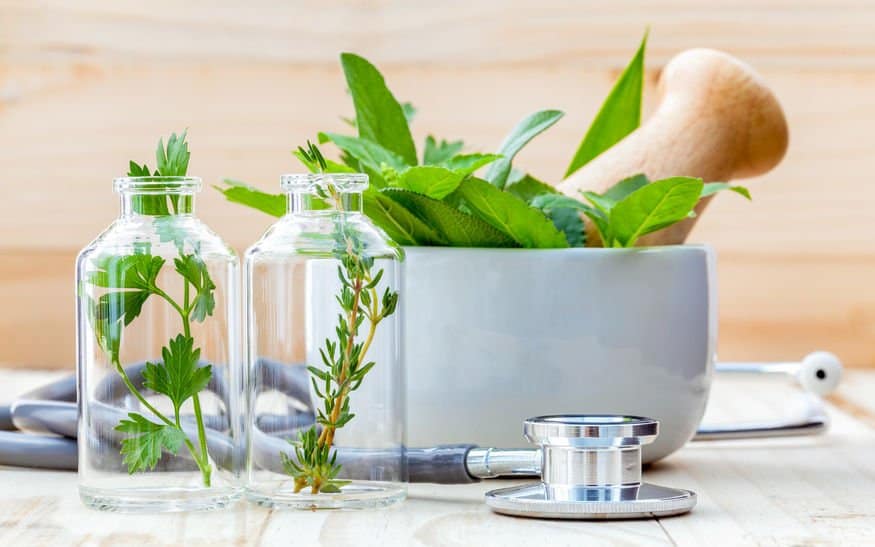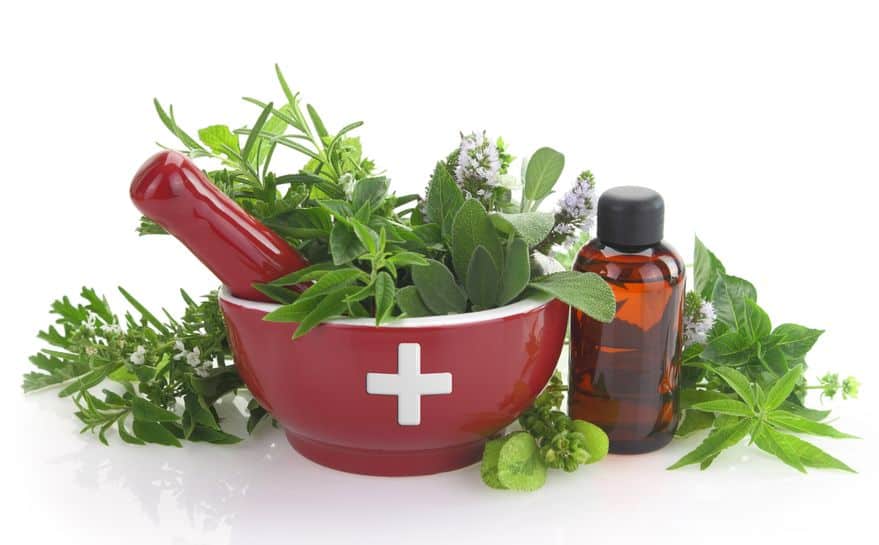
Ever tried to solve an advanced Sudoku or decode those insanely hard word wheels? They promise its one English word, but I swear it always looks Uzbekistani to me. Well, I recently learnt that these genius level puzzles are a breeze compared to trying to pin point the cause of a simple stomach ache.
From my friends and family all the way to my colleagues and lovely Olive Nation (fans and followers of Olivia), different people in my life have all reached out to me for help with one type of abdominal pain or another. Problem is, everyone wants an instant remedy that will just take away the pain and discomfort. Don’t get me wrong, I’ll gladly recommend some of the best essential oils for stomach aches if you’re really in a bad place.
But unlike pharmaceutical companies that would love nothing more than to have you on pain killers for the rest of your life, that’s not Olivia’s style. My approach is far more hands on than just dishing out meds. I always try to get to the bottom of the issue, dig out the root cause, make sure we’re treating the right thing, and most importantly, keep you healthy while we’re at it. So please try to read through the entire piece and not just the treatments and recipes – you could be missing out on crucial information that could not only offer permanent reprieve, but maybe even save your life.
In today’s very special segment on abdominal pain, we’ll be looking at how to diagnose your stomach ache the right way so as to know what the exact problem is. We’ll also delve into the expansive world of all the different causes and risk factors for stomach aches – but here’s where it gets interesting. See, a stomach ache could have hundreds if not thousands of causes – literally any organ in the abdomen could be responsible for a stomach ache. That’s a massive scope considering almost all the organs are in the abdomen.
And to make it worse, over 10 percent of people with a tummy ache have more serious underlying conditions such as appendicitis or ectopic pregnancies. To make sure we cover as much of it as possible, I’ll be stretching out the abdominal pains over the weeks into several articles; each touching on a different cause or underlying condition that could be causing your abdominal pain. So, are you ready for Olivia’s comprehensive and in-depth guide to all pains abdominal?
What Is Abdominal Pain

Also known as stomach ache, abdominal pain is a discomfort that originates between the pelvic area and chest. This pain can be dull, achy, cramp-like, or extremely sharp. Contrary to the name, a stomach ache could have absolutely nothing to do with your tummy.
In fact, it’s most likely a short lived symptom associated with non-serious medical issues. If this is the case, then there’s no need to be overly worried. However, severe and recurrent abdominal pain could be a precursor for serious underlying medical issues – definitely a greater cause for concern. So, what could be causing your abdominal woes? Well, given the variety of diseases that could cause it, a systemic approach to the diagnosis is called for. So before we get to the causes or reasons for your stomach ache, let’s try and diagnose the type of pain first.
DIY Diagnosis For Stomach Ache / Abdominal Pain
While I always encourage seeing a medical professional immediately you sense anything’s wrong, it’s possible to conduct your own diagnosis at home. The first thing a doctor will do is to gather some info on your history; so let’s DIY it shall we? After gathering information on the chief complaint such as characteristics, location, duration, aggravating factors, and others, ask yourself the following questions;
- Do you have any food or drug related allergies?
- Any prior medical issues and surgeries?
- Are you on any current medical regimen, prescription or otherwise?
- Any other symptoms apart from pain and discomfort?
- Being open about your health related behaviors such as alcohol and tobacco use also helps
Next, you need to identify the exact location where the pain is coming from. Now, I’m no doctor, but I’ve compiled a biologically accurate checklist that might help pinpoint the cause of the stomach ache.
1. Upper Abdominal Stomach Ache
This is pretty much the area that most people refer to as their tummy or stomach. It’s also the area with the largest collection of organs in your body. So you can guess how hard it is to know exactly what’s acting up.
In the upper center part of your abdomen, you’ve got the:
a) Stomach – Pain and discomfort could be caused by indigestion, gastritis, ulcer, cancer etc.
b) Pancreas – Pain caused by pancreatitis or pancreatic cancer
c) Appendix – Appendicitis
A little towards the left are the following organs
d) Spleen – prone to splenomegaly related pain
e) Colon – colon pain can be caused by conditions such as functional disorders, bowel obstruction, inflammation, cancer, among others.
And to the right, you’ll find even more organs including
f) The Gallbladder – pain caused by gallstones, inflammation, and possible worm infection
g) Liver – wide range of causes for pain i.e. hepatitis, abscess, cirrhosis, liver disease among others
2. Lower Abdominal Pain
As you would expect, women have a lot more to watch out for when it comes to lower abdominal pain than men. However, some causes are universal and all too common. In the lower abdomen, there’s the:
a) Cecum – Pain caused by obstruction in the bowels
b) Bladder – Pain caused by cysts, stones, or cancer
c) Female reproductive system – Uteral and Ovarian pain in women
Even more organs can be found towards the back such as
d) Kidneys – Pain caused by kidney stones, ureteral stones, hydronephrosis or cancer
Unfortunately, that’s where your DIY diagnosis ends; mainly because you don’t have the necessary equipment required to carry out the next part. Additional diagnosis such as blood testing, electrocardiogram and urinalysis will have to be done by a medical professional.
So, where do you start given this incredibly wide range of possible causes for your stomach ache? There’s no one size fits all cure when it comes to stomach aches; that’s the realm of greedy, drug-pushing pharmaceutical giants.
Here, we’ll have to do it Olivia’s way; by dedicating entire segments to each and every single cause of stomach ache in the hope for accurate and permanent treatment. We’ll delve deep into simple topics like gastritis and lactose intolerance all the way to complex issues such as endometriosis and ectopic pregnancies. And we’re starting with the most common culprit for stomach aches – Indigestion.
What Is Indigestion

Also known as Dyspepsia, indigestion refers to impaired digestion that causes pain or discomfort in the upper abdomen. As one of the most common bowel ailments, it affects 20% of the US population. Interestingly though, only 10% of those affected actually seek medical attention.
In itself, it’s not exactly a disease but rather a collective group of symptoms that include stomach ache, burping, nausea, bloating, and many more. This functional (or rather mal-functional) condition usually affects the stomach, first part of the small intestine and in some occasions, the esophagus as well. In some cases, indigestion can be chronic and intermittent with symptoms fluctuating in both intensity and frequency for years.
Typically, indigestion is almost always linked to drinking or eating and can even be accompanied by premature feeling of fullness. However, there are plenty of reasons why you could be experiencing dyspepsia. But before we get to that, let’s look at a list of the symptoms shall we?
Signs and Symptoms of Indigestion
- Stomach ache
- Abdominal discomfort
- Heartburn
- Early satiety (sensation of fullness)
- Bloating, flatulence, and burping
- Acidic taste in mouth
- Nausea and vomiting
- Rumbling or growling stomach
- Distended abdomen
These symptoms may be aggravated by eating; which calls upon many gastrointestinal functions to work in tandem. That’s basically what leads to the false notion that indigestion is caused by abnormal food digestion.
Causes and Risk Factors of Indigestion
By now, you’ve no doubt experienced a few symptoms of indigestion at one point in your life. That’s because dyspepsia is incredibly common and affects people of all ages and genders. Some of the risk factors that seem to cause indigestion include smoking, stress, fatigue, and eating too much too fast.
Gastrointestinal Issues
Most cases of indigestion are caused by abnormal function of the muscles of those organs in the gastrointestinal tract. As expected, GERD (gastroesophageal reflux disease) and peptic ulcers are causes for great concern. However, there are also less common cause such as gastritis, esophageal cancer, celiac disease and IBS.
H-Pylori Infection
While the role of this bacteria in indigestion is controversial and unclear, but some medical professional claim the symptoms of indigestion can be treated by addressing underlying issues such as H-Pylori infection.
Food and Drug Intolerance
This is the most popular reason for indigestion by many, but it’s usually an aggravating factor. Overeating, eating high fat foods, excessively quick and stressful eating as well as drinking too much coffee and alcohol could cause acute, self-limited dyspepsia. Likewise, food allergies and things like lactose intolerance have also been known to cause serious bloating and indigestion. Drugs that have been known to cause dyspepsia include NSAIDs, aspirin, antibiotics, corticosteroids, estrogen, opiods, Parkinson drugs, and many more. The list is literally endless.
Ways To Treat Indigestion

Treatment for dyspepsia will largely depend on two things. One is the cause of the indigestion itself, and the other is how severe the symptoms are. If your symptoms are mild, infrequent and barely give you any trouble, then a couple of lifestyle changes will probably sort things out. Lifestyle changes might also help you prevent indigestion in the first place.
Try to consume less caffeine, alcohol, chocolate and fewer fatty and spicy foods. Similarly, avoid smoking and try to exercise regularly. Making sure you grab some sleep for at least 7 hours every night will also go a long way to healing mild indigestion.
However, there are some cases of indigestion that are more advanced and incredibly painful. If this is the case, then your doctor should be able to prescribe the following medications.
Medical Treatments
i) Antacids – There are meds that counter the effect of stomach acid. They include Rolaids, Mylanta, Alka-Seltzer, Maalox, among others. These are primarily OTC and don’t require a prescription.
ii) Proton Pump Inhibitors – Also known as PPIs, these are highly effective drugs that reduce the amount of acid in the stomach. Some examples include Prevacid, Zegerid, Aciphex, Prilosec, Protonix, and others. PPIs are especially effective against indigestion caused by GERD.
iii) H-2 Receptor Antagonists – These include drugs like Pepcid, Axid, Zantac, Tagamet, and others that reduce the stomach acid levels. Some of these are OTC while others are only available through a prescription.
Now, it’s worth mentioning that these medications are not cures; they do absolutely nothing to address the root cause of your dyspepsia. Instead they only offer very minimal and temporal relief. However, some of them have been known to cause diarrhea or constipation so unless you want to trade one gastrointestinal issue for another, I’d suggest taking an alternative route.
Natural Remedies – Essential Oils anyone?
Now that you’ve seen how dreadful some of these side effects can be, going all natural doesn’t sound so bad. Honestly, what kind of medication takes away indigestion, only to give you constipation? And as if wreaking havoc on your general health wasn’t enough, even the doctors who prescribe these drugs wouldn’t advise long-term use. What kind of dumb-ass logic is that?
This is where good old natural remedies step in to save the day. In addition to brimming with a heap of helpful properties, essential oils don’t carry any harmful side effects. In fact, their smell alone is enough to beat standard side effects of other drugs such as nausea. When it comes to indigestion, essential oils help keep regurgitation at bay, promote faster healing of the gut, reduce acid reflux, and help with insomnia.
With the right oils and the right combinations, essential oils can work wonders for symptoms of indigestion such as bloating, flatulence, heartburn, early satiety, nausea, distention, and even pain. Dyspepsia might seem like a minor digestion issue, but trust me when I say that there’s nothing minor about ripping some loud, inappropriate and foul noises at the workplace. So, which are the right oils for the job?
Best 5 Essential Oils For Indigestion

1. Peppermint Essential Oil
Being among the select few precious oils that are safe to use on children, pregnant women and around pets too, peppermint EO is a must have in the house. That’s because kids have delicate tummies that are still yet to adjust to eating adult foods. So it’s only natural to expect a few tummy troubles once in a while. It’s usually my go to oil for stomach ache, cramps, and pretty much any type of pain and discomfort.
The main reason why it tops this list is because of its icy, cooling sensation that works as a natural pain reliever. Apart from its analgesic and sedative properties, peppermint EO can also be used to treat symptoms of indigestion such as nausea, gas, upset stomach, bloating, abdominal discomfort, and regurgitation. And as a bonus, the minty scent helps cover what I think are necessary odors – what, can’t a gal pass wind in the privacy of her own home?
2. Ginger
Warm, spicy, and with what many consider to be a strong, manly smell, Ginger essential oil is derived from the rhizome of the plant itself. For many of use, it’s been a staple ingredient in the kitchen for pretty much all our lives. Just goes to show you the importance of a wholesome, home cooked meal. Since it’s already a time proven cure that’s been used for centuries to treat a wide range of gastrointestinal issues, it should come as no surprise that it’s the second best essential oil for indigestion. The oil itself is packed with anti-inflammatory, analgesic, and warming properties that are particularly helpful for dealing with stomach ache, nausea, gas, bloating, flatulence, and other common symptoms of dyspepsia.
3. Eucalyptus Essential Oil
Extracted from the leaves of the succulent Blue Gum tree in Australia through a delicate process of steam distillation, Eucalyptus EO is another incredibly versatile but effective oil that’s perfect for the tummy. But due to its extremely high concentration, special care should be taken while handling it. I especially wouldn’t advise using this one for kids. Being similar to peppermint in terms of the menthol, some people even say that Eucalyptus works better and faster than the others when it comes to clearing indigestion. Either way, its numbing, cooling and relaxing effects are quite remarkable.
4. Cinnamon Essential Oil
Here’s another spicy kitchen ingredient that further reinforces why we all need wholesome, home cooked meals. When ingested, cinnamon contains mild analgesic and antispasmodic properties that help clear pain and abdominal discomfort. This includes dealing with multiple symptoms of indigestion such as distention, gas, and pain. But being the versatile oil that it is, cinnamon EO can also be used topically over the tummy to offer relief for acute stomach ache.
5. Fennel Essential Oil
Harvested from the notably aromatic fennel seeds that have been chewed for centuries as breath fresheners and appetite suppressors, it’s only natural that Fennel EO be rich in digestion friendly components. Today however, fennel doesn’t make it in many diets, especially the seeds. That’s why having the concentrated oil in your collection is crucial. Its potent antispasmodic and relaxing properties help reduce stomach aches and cramping by relaxing most of the muscles in the digestive tract.
6 Top Essential Oil Recipes For Indigestion

A: EO Massages and Rubs for Indigestion
When it comes to essential oils, there’s no safer way to get them in your system than by topical application. This allows you to work with even the strongest oils at higher concentrations and play around with the recipe without having to walk on egg shells. Plus, who doesn’t enjoy a good massage and foot rub once in a while? So call over that special friend, spouse, or even your kids and teach them the following recipes – coz they’re the ones who’ll be getting their hands in the meat of it – so to speak.
A1. Chest and Tummy Massage Rub for Stomach Ache and Indigestion
What You’ll Need:
- 6 drops Peppermint EO
- 5 drops Tea Tree EO
- 4 drops Eucalyptus EO
- 3 drops Fennel EO
- 30 ml Sweet Almond carrier oil
Directions:
One of the primary symptoms associated with indigestion is usually stomach ache. This recipe is specially designed to handle the pain and discomfort part of dyspepsia. Start things off by dripping all the essential oils in a glass bottle as directed. Of course, you can double, triple, or even quadruple the amounts depending on how big of a batch you want to create. Next, top it off with the right amount of carrier oil – I chose Sweet Almond but as always, you are ultimately free to choose your favorite carrier oil. Give it a proper shake to mix the ingredients and once again before each use.
This rub is meant to be used for massaging the chest and stomach area once a day. Most of the essential oils we used are analgesics and potent pain relievers that will help relax the muscles in the abdomen and offer relief from stomach ache. Needless to say, the relaxed state of the muscles will also help with the bloating.
A2. Tropical Foot Rub Blend for Chronic Indigestion
What You’ll Need:
- 5 drops Lime EO
- 5 drops Sandalwood EO
- 4 drops Orange EO
- 3 drops Tangerine EO
- 30 ml Coconut oil
Directions:
Here’s a great recipe to use at night right before you go to sleep. A large percentage of people with chronic indigestion are often woken up at late hours of the night by stomach ache, heartburn, flatulence, and other associated symptoms. This foot rub will not only help with most matters digestion, but also have some added benefits that you didn’t expect. See, the foot is the gateway to your body – literally every organ in your body is represented somewhere underfoot. So call in your spouse, kids, the more the merrier and get ready for the ultimate foot massage.
Start by cleaning your feet thoroughly and letting them dry out before applying anything. Next, mix your oils as indicated in a non-reactive bowl as indicated above. Remember, you’re ultimately free to decide how much you want to make as long as you store it in a dark glass bottle. After topping off with the coconut oil, shake well, call in the team and get to working on the arches of your feet. Apply generously and massage it all over your feet for relief from heartburn, reflux, indigestion, and those nightly stomach upsets.
B: EO Dyspepsia Diffusion Blends

Here’s another perfectly safe way to get those essential oils in your system. And unlike any of the other methods, this one is the safest for young kids and toddlers because there’s no direct contact with their skin. So if you also have sensitive skin, then you’ll find these diffuser recipes more than helpful. Of course, you might have to use more ingredients to achieve the same effect as someone who was applying topically. So, are you ready? Grab your diffuser and let’s get stirring.
B1. Goodnight Diffuser Blend for Tummy Troubles
What You’ll Need:
- 3 drops Peppermint EO
- 3 drops Lavender EO
- 2 drops Fennel EO
- 2 Valerian root EO
- Diffuser
Directions:
As you’ve no doubt noticed, I’ve picked out essential oils that are straight up going to knock you out faster than you can say ouch. Since it’s perfectly safe to use for kids and pregnant women, I chose to make the base scent all about the mint. See, apart from its analgesic and sedative properties, peppermint EO can also be used to treat symptoms of indigestion such as nausea, gas, upset stomach, bloating, abdominal discomfort, and regurgitation – all of which will actively keep you up at night.
Likewise, Fennel plays a crucial role thanks to its potent antispasmodic and relaxing properties that help reduce stomach aches and cramping by relaxing most of the muscles in the digestive tract. Lavender and Valerian add soothing, flowery scents that should give you sweet, uninterrupted dreams. To make use of this recipe, just hook up your diffuser as usual and drip in the oils one by one. If you have one of those automatic diffusers that shut themselves off in the middle of the night, even better.
B2. Lunch Bell EO Mini Diffuser Formula
What You’ll Need:
- 3 drops Cinnamon EO
- 3 drops Ginger EO
- 2 Drops Eucalyptus EO
- Mini Diffuser
Method:
One of the most annoying (and dangerous) symptoms of indigestion is early satiety. Coupled with an acute loss of appetite, it’s very normal for most people with dyspepsia to skip meals. Big mistake; see, there’s nothing worse for indigestion and other tummy troubles than an empty stomach. Because this is when the acids and digestive juices start wreaking havoc on your insides. So what do you do? Whip up a quick EO appetizer that will get you hungry and ready to eat.
You’ll notice that we used oils for plants and spices that you’d normally find in your kitchen. I can’t reiterate on the importance of a good home-cooked meal – wholesome. The Cinnamon contains mild analgesic and antispasmodic properties that help clear pain and abdominal discomfort while clearing out gas to avoid early, false feelings of fullness. The best thing about this one is that you can use it even in the workplace to build up an appetite before lunch. Just set up your diffuser, add water, sneak in some essential oils and let everyone in the office enjoy the effects.
C: Ingestible EO Blends of Indigestion
While doing your research, I’m sure almost every other site you came across probably had a big warning written NEVER INGEST ESSENTIAL OILS. Well, I kind of agree with them, but only partly. See using essential oils internally is a delicate art and science. Unlike topical application and diffusion, there is absolutely zero room for error. That’s why most sites prefer to skip all that liability and just put a big NO on it. Cowards, the lot of them. Used correctly, essential oils can treat indigestion from the inside more effectively than all the other methods. And here’s how you do it.
C1. EO Herbal Tea for Stomach Ache and Indigestion
What You’ll Need:
- 1 drop Lemon EO
- 1 drop Ginger EO
- 1 drop Peppermint EO
- Tablespoon of honey
- Choice of green / herbal tea in a pot
Directions:
I understand you’re a bit apprehensive about using EOs internally on either you or your kids. So I’ll start you off with a recipe that dilutes the oils to very dismal concentrations. In itself, herbal tea is already great for the digestive system – you can imagine how strong the effect becomes once you spike it with some EOs. Just whip up your pot of hot herbal tea (or ice tea depending on your preference) and add in the food grade essential oils, honey, and any other additive you want. This tea is best taken half an hour before meals to give the digestive system a jump start.
C2. EO DIY Dyspepsia Capsules
What You’ll Need:
- 1 drop Peppermint EO
- 1 drop Tangerine EO
- Fractionated coconut oil
- Vegetable capsules – size 00
Directions:
This one calls for more desperate measures and will be necessary if your indigestion is recurrent and incessant. But before we even start, make sure that all EO s meant for ingestion are non GMO, USDA certified, and recognized as safe by the FDA. Begin by opening the veggie capsules size 00 and dripping in the essential oils as indicated. Top off with the fractionated coconut oil and seal it back. This capsule is best taken with a glass of baking soda water (1/4 tsp baking soda in a glass of water) just after dinner to pre-empt the symptoms of dyspepsia.
The Bottom Line
That wraps up another interesting segment on one of the most important organs in our bodies. The stomach is literally responsible for your growth, development, and life. It’s the only organ where you’ll dump a mixture of tough, roast meat, nuts, fruits with large seeds, a pint of cold beer and some nice red wine – it’ll make sure everything gets to where it needs to be.
So how about a little respect and TLC for your tummy once in a while, huh? I really hope that the above information will help you beat your indigestion and if you don’t have it yet, it’s never too early to start living healthy. Adopt essential oils to your everyday life and turn your body into one mean food-digesting machine.




